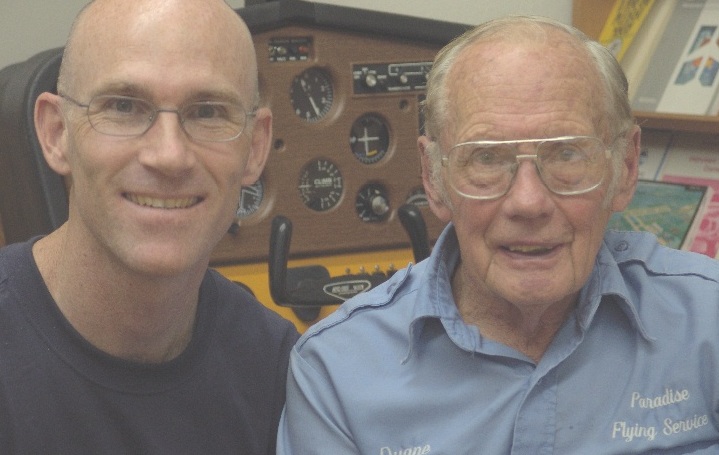See Part One of Whitcomb-Syrett radio interview. This continues quoting from the interview I had last year, over the phone, with Richard Syrett.
Richard Syrett:
Jonathan Whitcomb has been to Papua New Guinea and talked to the aboriginals there, and others who claimed to have seen what they call (it goes by a number of names) . . . the “ropen,” a flying cryptid which bears a striking resemblance to a creature we’ve all told become extinct some sixty million years ago: pterosaurs. And, as he says, there’s been a recent sighting in Southern California, and we’ll get some more details on that, although I understand details are a little scarce at this time, but we will discuss that.
Jonathan, back to Papua New Guinea and Duane Hodgkinson, back in 1944: Who was he and what did he see?
Jonathan Whitcomb:
He was a farm boy in his teenage years in Ohio, and he was in the . . . World War II in 1944, he was in Finschhafen area. (At that time, the Japanese had already moved on . . .) And he [Hodgkinson] and his army buddy, they decided go visit a village . . . [west of Finschhafen]
They were in a jungle clearing, in the middle of the day, clear weather, no obstruction to what they saw, and when they were in this jungle clearing, which was about 100 feet across (in diameter) . . . a wild pig ran through there, and it startled them for a moment, until they realized it was just a pig.
And then what happened was astonishing, because something began flying up out of the clearing . . . running at first, and they were astonished because at first they thought it was a bird or something and they realized it was much too big, and as it got airborne, it flew right over the clearing. And they were astonished and thinking it was gone.
And then it came back over the clearing, the opposite direction, . . . it had a head crest . . . like a pterosaur, and a very long tail. Hodgkinson estimated the tail at ten to fifteen feet at least . . . in length.
Syrett:
And the wingspan?
Whitcomb:
About twenty-nine feet . . . and the two men and the animal were in the same clearing, which was 100 feet across, so there’s no reasonable way that they could have misunderstood the size of it. And they weren’t expecting anything like that; they thought it was, at first, just a bird, but it was just far too big.
Syrett:
And did this creature have feathers?
Whitcomb:
. . . He didn’t notice any. Now this is an interesting point: He said he saw no feathers, but he was not adamant saying there couldn’t possibly be any feather on the whole creature, because he was concentrating on the head.
But basically we know from that the type of head it was; he got a very clear view of the head, and we believe it was a giant Rhamphorhynchoid pterosaur.
Syrett:
And I guess the obvious question the skeptic would ask is, “Why should we believe Duane Hodgkinson? How do we know he’s not just pulling our collective leg?”
Whitcomb:
Yea, there are a number of reasons for that. He’s a flight instructor for many years now; he has many thousands . . . of hours of flight time, and he teaches people how to fly. He wouldn’t be conducting a hoax for sixty years, with the possibility that people could just mistrust him and not become clients.
There’s other reasons too. He’s not alone . . . in 1971 there’s Brian Hennessy, an Australian; he saw a similar creature, quite similar, because I gave him a test similar to Hodgkinson’s in identifying sketches and comparing lengths of the head crest, and so on. He saw the same species, I believe, [as Hodgkinson] in New Guinea, but on an island to the east—Bougainville Island— . . . I believe is the same species.
Syrett:
We should point out, Jonathan, that . . . your vocation is an independent forensic videographer for attorney firms.
Whitcomb:
I’ve been doing that for many years except for recent years when I’ve been much too busy writing and investigating these creatures.
To be continued
.

Garth Guessman (left) interviewed the eyewitness Duane Hodgkinson (right) in 2005, near Livingston, Montana — See Youtube video Pterodactyl Eyewitness
.
Podcast-Radio Interview: Whitcomb & Syrett (Part One)
When you have a sighting that’s way over twenty feet, it’s obviously not a Flying Fox fruit bat, not a bird like an eagle. And we do have sightings [with] very high credibility . . .
Listen to the interview between Jonathan Whitcomb and Richard Syrett
Richard speaks with cryptozoologist, Jonathan Whitcomb, who specializes in living-pterosaur investigations. He has traveled to Papua New Guinea in an attempt to verify sightings of this creature by the local indigenous people. . . .
.



